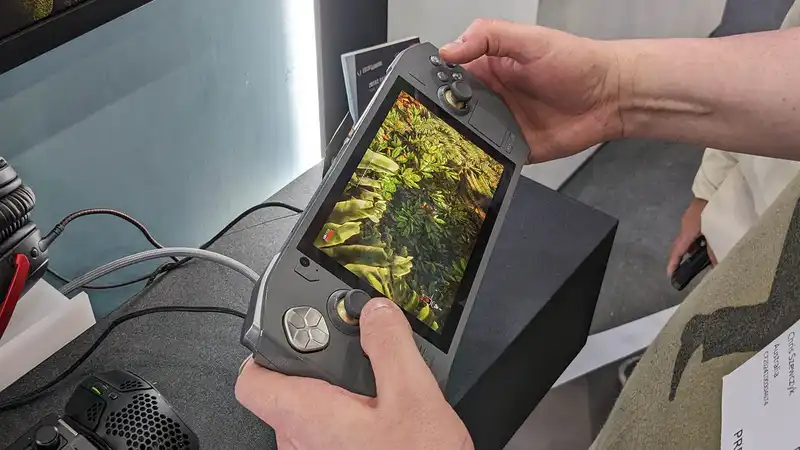A showcase for all things computing, Computex 2024 was a natural place for vendors to unveil their new and upcoming gaming handhelds; Zotac's Zone looks to be a strong device, but Asus, Adata XPG, MSI, and Antec have also announced their latest portable gaming takes, and they are likely to face stiff competition.
I had the opportunity to play on the Zotac Zone, and while still a work in progress, the machine performed well and felt fine to the touch.
Specs-wise, the Zone is powered by an AMD Ryzen 7 8840U with 780M graphics, which looks to do a pretty decent job of pushing out pixels; it has 16GB of LPDDR5X-7500 memory and supports 2280 NVMe SSDs. This is definitely something to be happy about.It supports a MicroSD slot and dual USB4 (DP 1.4a), but the 48.5Wh battery is on the small side compared to the ROG Ally X's 80Wh battery.
What really impressed me about the Zotac Zone is its 7-inch AMOLED 1080p touchscreen, with a 120Hz refresh rate and up to 800 nits of brightness; while I did not experience all the handhelds at Computex 2024, the Zone's screen was the best I saw. Even in bright environments, I was truly impressed with the brightness, contrast, and color reproduction of the Zone's display.
The 7-inch display and 1080p resolution feels like the sweet spot for a gaming handheld. 1440p is not necessary at this size. I would opt for smoother gameplay and higher FPS over pixel density.
The Zone has some interesting controls, including a Hall effect joystick, a two-stage trigger, and a radial dial. Unfortunately, the vertical look was inverted in my tests, and I was too focused on the movement to get the full feel in a few minutes. Overall, I was pleased with the feel of the joystick and triggers, which fit my rather large hands.
I was a little less impressed with the finish of the unit itself. It felt a little plasticky, but it was rigid enough and seemed to be able to take a bump or two. I would have liked to see a truly high-end case, because a truly high-end case would undoubtedly add even more to the expected price of $800.
Zotac also showed off a selection of accessories, including HDMI, USB Type-A, and Type-C compatible docking stations. Of course, a special carrying case is also available.
We'll have to wait a few months to see what the final product looks like, but if visual quality is more important than anything else, the Zotac Zone is going to be hard to match; we like the fact that it supports 2280 SSDs, but the problem is that the much cheaper Steam Deck OLED, but the question is whether it can impress enough over the much less expensive Steam OLED.


Comments